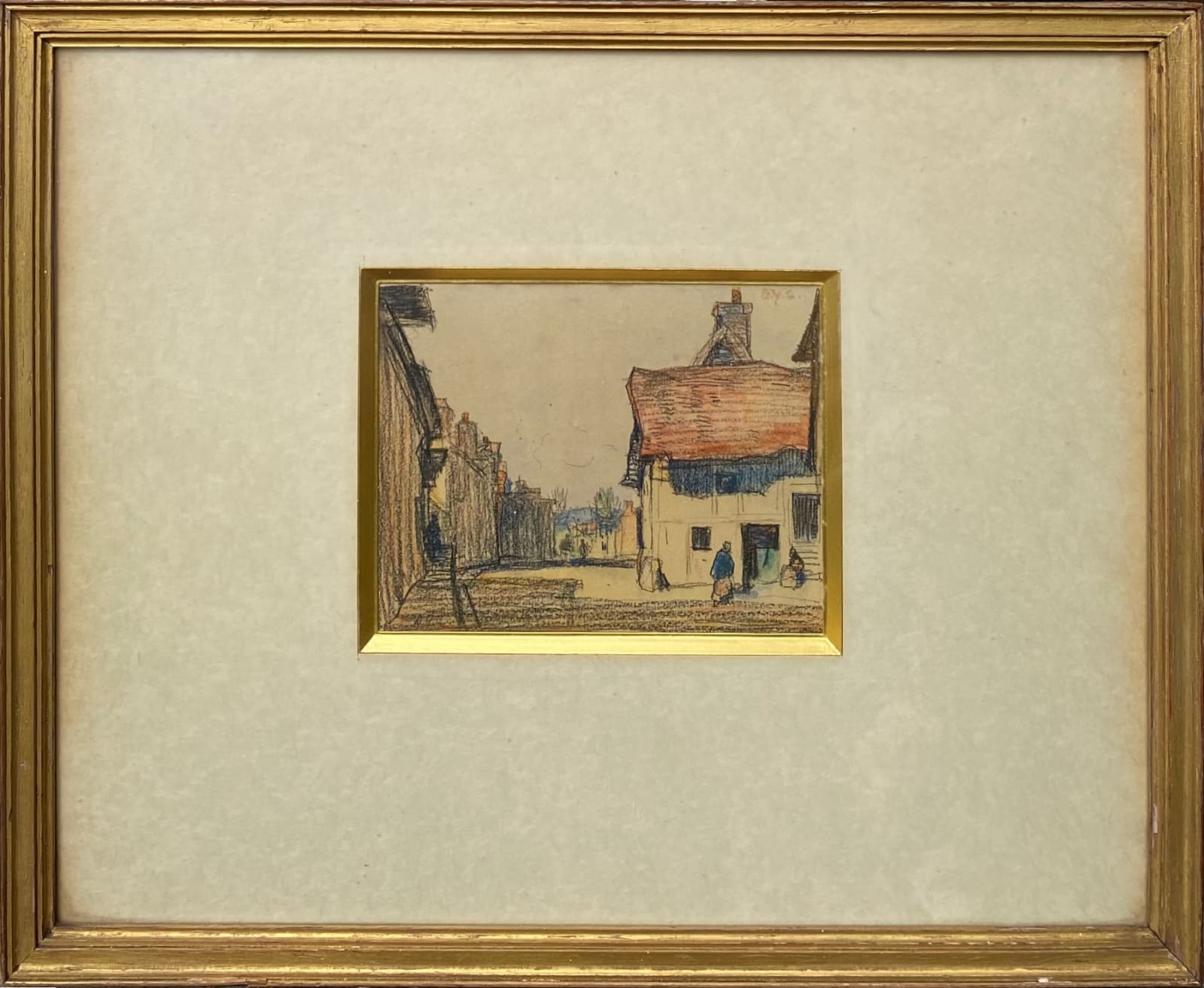Sir David Young Cameron RA RSA Scottish, 1865-1945
A Norman Village
Watercolour and black chalk
Size with frame 15 x 18 ins
Size without frame 5 1/2 x 6 3/4 ins
Size without frame 5 1/2 x 6 3/4 ins
£ 1,100.00
Sir DY Cameron RA RSA RWS RSW RE was born in Glasgow and died in Perth. Painter, watercolourist and etcher. Son of a Glasgow minister. After a short, rather unhappy time spent in business, he studied at the Glasgow School of Art during the evening and in 1885 joined the Life School of the RSA in Edinburgh as a full time student. Lived in Edinburgh until1898 when he moved to Kippen. His early paintings and watercolours are eclectic, showing a variety of influences including those of Velasquez, Whistler, the Barbizon School, and Dutch artists of the 19th century Revival, particularly Mathew Maris. In the 1890s he became known for his etchings and it was not until 1893 that there was evidence of the development of a very personal style. The landscapes of this period have a great feeling of weight and grandeur conveying the immensity of the structure. The breadth of handling is monumental and an air of mysticism is conveyed. At the end of the first decade of the 20th century, Cameron tended to eliminate the brighter colour from his paintings preferring cool browns, strong blacks and pale greys. This sombre mood was not always in evidence as, for example, his painting 'Ben Ledi' in 1914 with its feeling for the crisp, cool springtime air. In about 1916 he began a series of architectural subjects of outstanding quality, the predominant feature of which was the definite geometrical pattern made on the canvas by the 'close-up' technique giving an exciting immediacy to the unpopulated scene. This style continued into the early 1920s, when he was concentrating on the landscape and buildings of Provence and Italy. His colours began to intensify. It is generally thought that while his French landscapes are artistically his most successful, it is the paintings of his native Scotland that showed his poetic majesty at its best. He was a a master etcher, able to conjure up subtle colour, atmosphere and the vastness of the scene before him with a wonderful economy of line. Many of his etchings were used to illustrate books by Seton Gordon and Herbert Maxwell.
Not only a fine artist, he was also a fine human being. Many people remember his generosity, kindness and compassion, given without stint or consideration for himself. Although some books list him as one of the Glasgow Boys, he was not associated with the group in its formative years and the emphatic colour contrasts in his later landscapes, quite undetermined by decorative considerations, make him atypical of the movement. His work is represented in many art galleries throughout the UK and beyond.
Not only a fine artist, he was also a fine human being. Many people remember his generosity, kindness and compassion, given without stint or consideration for himself. Although some books list him as one of the Glasgow Boys, he was not associated with the group in its formative years and the emphatic colour contrasts in his later landscapes, quite undetermined by decorative considerations, make him atypical of the movement. His work is represented in many art galleries throughout the UK and beyond.
Join our mailing list
McEwan Gallery Newsletter
* denotes required fields
We will process the personal data you have supplied in accordance with our privacy policy (available on request). You can unsubscribe or change your preferences at any time by clicking the link in our emails.



